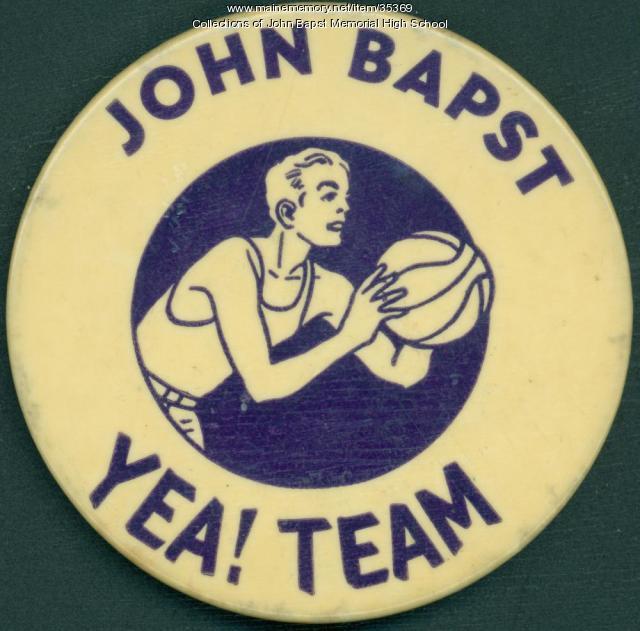Keywords: Dues
Item 72846
Edna St. Vincent Millay, Camden High School dues, ca. 1940
Contributed by: Camden Public Library Date: circa 1940 Location: Camden; Austerlitz Media: Paper
Item 15103
Have you a Red Cross service flag? World War 1 poster, 1918
Contributed by: Maine Historical Society Date: 1918 Media: Ink on paper
Item 151700
Dyer Library alterations, Saco, 1913-1917
Contributed by: Maine Historical Society Date: 1913–1917 Location: Saco Client: unknown Architect: John Calvin Stevens and John Howard Stevens Architects
Exhibit
John Bapst High School was dedicated in September 1928 to meet the expanding needs of Roman Catholic education in the Bangor area. The co-educational school operated until 1980, when the diocese closed it due to decreasing enrollment. Since then, it has been a private school known as John Bapst Memorial High School.
Exhibit
Following his historic flight across the Atlantic in May 1927, aviator Charles Lindbergh commenced a tour across America, greeted by cheering crowds at every stop. He was a day late for his speaking engagement in Portland, due to foggy conditions. Elise Fellows White wrote in her diary about seeing Lindbergh and his plane.
Site Page
Farmington: Franklin County's Shiretown - Farmington Public Library, 1916
"… elm trees, which have long since been removed, due to the Dutch elm disease, which was widespread in mid-20th century."
Site Page
Thomaston: The Town that Went to Sea - Thomaston Business District - 1857 to 1880
"By the 1880s, Thomaston was deemed to be one of the wealthiest towns in the nation due to the influence of shipbuilding."
Story
Father Renald Labarre: the life of a Catholic priest
by Biddeford Cultural & Heritage Center
A Biddeford native provides insights on his Franco-American roots and life as a Catholic priest.
Story
Annette Addorio: 100+ years of memories from full life
by Biddeford Cultural & Heritage Center
From 1914 to 2018, highlights from my life in Biddeford
Lesson Plan
Longfellow Studies: The Birth of An American Hero in "Paul Revere's Ride"
Grade Level: 9-12
Content Area: English Language Arts, Social Studies
The period of American history just prior to the Civil War required a mythology that would celebrate the strength of the individual, while fostering a sense of Nationalism. Longfellow saw Nationalism as a driving force, particularly important during this period and set out in his poem, "Paul Revere's Ride" to arm the people with the necessary ideology to face the oncoming hardships. "Paul Revere's Ride" was perfectly suited for such an age and is responsible for embedding in the American consciousness a sense of the cultural identity that was born during this defining period in American History.
It is Longfellow's interpretation and not the actual event that became what Dana Gioia terms "a timeless emblem of American courage and independence."
Gioia credits the poem's perseverance to the ease of the poem's presentation and subject matter. "Paul Revere's Ride" takes a complicated historical incident embedded in the politics of Revolutionary America and retells it with narrative clarity, emotional power, and masterful pacing,"(2).
Although there have been several movements to debunk "Paul Revere's Ride," due to its lack of historical accuracy, the poem has remained very much alive in our national consciousness. Warren Harding, president during the fashionable reign of debunk criticism, perhaps said it best when he remarked, "An iconoclastic American said there never was a ride by Paul Revere. Somebody made the ride, and stirred the minutemen in the colonies to fight the battle of Lexington, which was the beginning of independence in the new Republic of America. I love the story of Paul Revere, whether he rode or not" (Fischer 337). Thus, "despite every well-intentioned effort to correct it historically, Revere's story is for all practical purposes the one Longfellow created for him," (Calhoun 261). It was what Paul Revere's Ride came to symbolize that was important, not the actual details of the ride itself.














